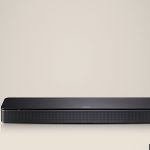
Everyone is running toward quality sound production. At times, you may want to make it sound bad in order to complete your record. Since you can specialize from bad quality to a good one, there are cases when you can do vice versa.
You might wonder who in the right mind would want intentionally to make your mic sound bad, but there is a logic behind it which we will focus on in the article and explain in detail.
Modern technology nowadays makes everything possible, so why not take full advantage of it? There are so many ways to turn the microphone sound quality into a bad one, but first of all, let’s go over the logic behind that intention.
Why Make the Microphone Audio Quality Bad?
The reasons behind the logic of making the sound quality bad are infinite, but let’s see a couple of reasons why would somebody want to do it.
Attention-Seeking Social Media Content Creation
The entertainers on social media all over the world started this trend. The voice-overs on TikToks and Instagram reels increase in number every day. This is a visible fact and influencers for the sake of views create contents that will catch the attention of the viewers.
The bad microphone can illustrate the story better than video, that’s a fact. Let’s take an example; you can make a video about beautiful travel places and you want to show the background noise, plus difficulties right? You can easily play with a mic to make the sounds bad and explain the crowded people behind.
Gaming & Storytelling

Another reason to make the mic sound bad is for gaming purposes. Online gaming is the newest trend now. The sound distinction in the gaming world is a must, it helps the story as a whole package and indicates the character’s emotions.
Example time; if you play any “Hitman” series, I’m sure you have noticed the mission giver is named Diana, and her voice being incredibly serious. That affects the entire game’s state of seriousness. Alternatively “Uncharted” is an action-adventure video game, the characters appear more sarcastic and sometimes even have supernatural voices.
Meetings
Let’s face the truth that Zoom meetings are boring and we want chill time. Most of the time we shut off the microphone and camera to feel safe even though we doubt a lot if the mic is silent, anyways. You want to trick your boss and coworkers that your mic is currently running an issue and hide. I mean, I don’t judge you because sometimes we’re not in the mood or just try to get out of a certain situation.
You see bad microphone isn’t bad after all.
Here are 4 Ways to Make Microphone Sound Bad on Purpose.
Be Within Close or Distant Range of Microphone

A low sound production effect is what you get when the mic is too close to you. Get to that point where your mouth touches the mic. Add your spit or senseless noises and breathe heavily. Alternatively, if the gain is very high when recording closer to the mic, the loudness goes to the greatest capacity and creates sound coloration.
In case you have an amplifier, you can turn up the gain knob and create really loud noises with lower quality, or you can edit later.
Distance is another way to play around with a microphone. it is very helpful in noisy and disorderly ambient or the noises that come from an air conditioner. Using a mic from the distance helps a lot to create very realistic and natural crowd noises that drop the mic quality.
Play with EQ (Equalizer)

Doing an impersonation of a voice mail and a phone call, adjusting the equalizer settings by removing high and low frequencies, and keeping the midrange frequency solely is the key. Phone calls remain in the mid ranges in the human voice and can effortlessly be impersonated. We see these tactics across the sound effects in the movies and songs.
Keep playing around with the EQ until you find out which one shows the worst result.
Diaphragm Size
The diaphragm size of the microphone is the bridge between sound and mechanical data creation. The membrane is slim and it is located in the middle top of the microphone. In case you have ever broken the mic or investigated by opening it, I’m sure you have seen a small drum shape.
Small-diaphragm condenser microphones are 1/2″ (12.7 mm) or less in size. So if you pick a small size of the diaphragm, the microphone will sound awful.
Separate the Mic Into Pieces

This should be the last option, but everything is for the sake of productivity. Microphones are very sensitive electronic devices and slight damage to the cable or power source is enough to break it.
However, we don’t want to ruin our expensive mic, or do we? So, in this scenario just unscrew the head part, cut the foam or grille and leave it to sunlight exposure. This will harm the diaphragm.
If you ain’t got time for none of that, just simply throw the mic on the floor, it’s a piece of cake to break it. Be mindful that once you are done, you will be stuck with this voice forever,
How to Make Microphone Sound Bad on Purpose During Meetings?

People nowadays are so creative, I’ll give them that. They try every way possible to avoid meetings. Here I am to make your work easier.
Go to the settings in Zoom and on top you will see the “Use Original Audio” option. This setting lets you either enable or disable noise forcibly. By using that, the app records what the mic snatches up. Add some background noise and I’m hundred percent sure that the whole staff will ask you to mute the mic. Make them believe your work equipment is of really low quality.
A Brief Summary
So as I said before, for the sake of productiveness, we achieve anything, and breaking the microphone is an option. This is the fun part, but using it for content creation, gaming, and Zoom meetings isn’t a bad idea after all.
Further Reading
If you don’t know how to connect Cowin headphones, check out this article to learn how to accomplish it. After that, read the tutorial that explains how to properly reset Bose headphones.
If you’ve ever wondered why headphones contain magnets, you can learn the answers in this article.
Another intriguing article, in which is discussed the possibility of a connection between hair loss and the use of headphones
Audio Engineer
You’ll never find anyone more passionate about audio as me. I love to share my knowledge with others and help people find the right equipment for them.





